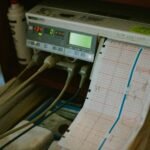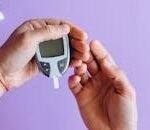-
Blogs, Biochemistry, Biostatistics, Biotechnology, Chemistry, Community Pharmacy, Hospital Pharmacy, Human Anatomy And Physiology, Inorganic Chemistry, Medicinal Chemistry, Microbiology, Miscellaneous, Novel Drug delivery Systems, Organic Chemistry, Pathophysiology, Pharma Updates, Pharmaceutical Analysis, Pharmaceutical Jurisprudence, Pharmaceutics, Pharmacognosy, Pharmacology, Pharmacy, practice mcq, Previous Question Papers, Social Pharmacy, Study Material
NEET-SS Pathology Exam 2025: Ultimate Guide to Ace Your Preparation

The NEET-SS Pathology exam is scheduled for November 2025, and if you are aspiring for DM/ MCh Oncopathology or other super-specialty programs, early and structured preparation is essential. This guide will help you navigate the best resources, mock tests, and study materials from eLearningFRCPath to boost your performance. Why NEET-SS Pathology Requires Focused Preparation The
-
B Pharm First Semester Pharmaceutical Analysis (BP102T) Notes
B Pharm First Semester Pharmaceutical Analysis (BP102T) Notes Welcome to the first semester of B Pharmacy! Our “Pharmaceutical Analysis (BP102T) Notes” are here to help you get started with your studies. These notes cover all the important topics you’ll need to know, from the basics to more advanced. Click on the links for each unit
-
Electrochemical Methods
Electrochemical methods Electrochemical methods in pharmaceutical analysis are powerful techniques that utilize the electrical properties of substances to determine their concentration or analyse their electrochemical behaviour. These methods often offer advantages over other analytical methods, such as a high degree of accuracy, precision, selectivity, and also low cost of operation. These methods are based on
-
Redox Titrations
Redox titrations Redox titration is a laboratory method used in analytical chemistry to determine the concentration of an analyte. This method is based on a redox reaction, which involves the transfer of electrons between the titrant and the analyte. One compound undergoes oxidation (loses electrons), while the other undergoes reduction (gains electrons). The concentration of
-
Diazotization Titration
Introduction Diazotization is an organic reaction that involves the conversion of a primary aromatic amine into a corresponding diazonium salt. This process was first reported by the German industrial chemist Peter Griess in 1858. The general mechanism of the diazotization reaction involves the use of nitrous acid and another acid to treat aromatic amines, yielding
-
Gravimetry
Gravimetry Gravimetry is a method used in analytical chemistry to determine the quantity of an analyte based on the mass of a solid. It’s a quantitative method used to determine the amount of a substance present in a sample by measuring its mass. This technique relies on the principles of precipitation and weighing to isolate
-
Complexometric titrations
Complexometric titrations Complexometric titration, also known as chelatometry, is a form of volumetric analysis. It’s particularly useful for determining a mixture of different metal ions in solution. The formation of a colored complex is used to indicate the end point of the titration. The reaction reaches equilibrium rapidly after each portion of titrant is added,
-
Precipitation Titrations
Precipitation titrations Precipitation titrations are a type of titration that involves the formation of a precipitate during the titration process. In a precipitation titration, a solution of a known concentration (the titrant) is added to a solution of the substance being studied (the analyte). The titrant reacts with the analyte to produce a precipitate, which
-
Non-aqueous titration
Introduction Non-aqueous titration refers to a type of titration in which the analyte substance is dissolved in a solvent that does not contain water. This procedure is significant in pharmacopoeial assays. The need for non-aqueous titration arises because water can behave as a weak base and a weak acid, and can hence compete in proton
-
Acid Base Titrations
Acid base titrations Acid-base titration is a quantitative analytical chemistry technique used to determine the concentration of an unknown acid or base solution by neutralizing it with a standard solution of known concentration. The process involves the gradual addition of the titrant (the solution of known concentration) to the analyte (the solution of unknown concentration)
Search
Recent Posts
- 2D Echo Test (Echocardiography): Uses, Procedure, Normal Values, Cost, and Clinical Importance
- The Ultimate Guide to Glucometers: Types & Uses Explained
- Mounjaro Injection (Tirzepatide): Uses, Dosage, Benefits, Side Effects & more
- Benefits of Walking for Heart and Diabetic Patients
- Bevacizumab Explained: Structure, Mechanism of Action, Clinical Uses, and Side Effects
Categories
- Biochemistry
- Biostatistics
- Biotechnology
- Blogs
- Chemistry
- Community Pharmacy
- Diagnostic tests
- Disease & Conditions
- Drug Index
- Featured Blog
- Hospital Pharmacy
- Human Anatomy And Physiology
- Inorganic Chemistry
- Lifestyle & Wellness
- Medicinal Chemistry
- Microbiology
- Miscellaneous
- Novel Drug delivery Systems
- Organic Chemistry
- Pathophysiology
- Pharma Instruments & Devices
- Pharma News & Updates
- Pharma Updates
- Pharmaceutical Analysis
- Pharmaceutical Jurisprudence
- Pharmaceutics
- Pharmacognosy
- Pharmacology
- Pharmacy
- practice mcq
- Previous Question Papers
- Social Pharmacy
- Study Material
Archive
- December 2025 (3)
- November 2025 (1)
- October 2025 (1)
- September 2025 (7)
- August 2025 (7)
- July 2025 (6)
- June 2025 (9)
- May 2025 (9)
- April 2025 (10)
- March 2025 (13)
- February 2025 (13)
- January 2025 (20)
- December 2024 (48)
- November 2024 (49)
- October 2024 (64)
- September 2024 (62)
- August 2024 (58)
- July 2024 (56)
- June 2024 (25)
- May 2024 (17)
- April 2024 (19)
- March 2024 (21)
- February 2024 (18)
- January 2024 (24)
- December 2023 (13)
Tags
biochemistry bpharmacy third semester Construction free practice mcq inorganic chemistry microbiology microbiology mcq pathophysiology Pharmaceutical Engineering pharmaceutics Pharmacology pharmacy practice mcq physical pharmaceutics physical pharmaceutics 2 practice MCQ for govt pharmacist exam





